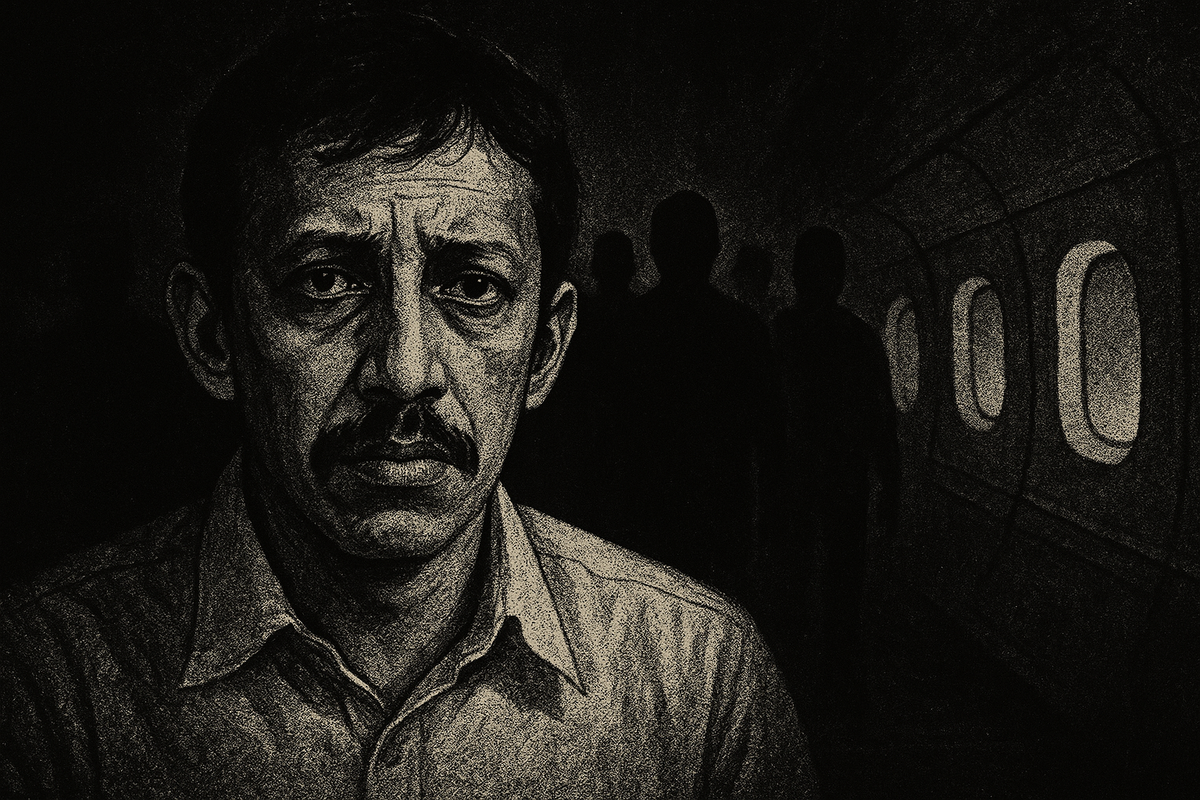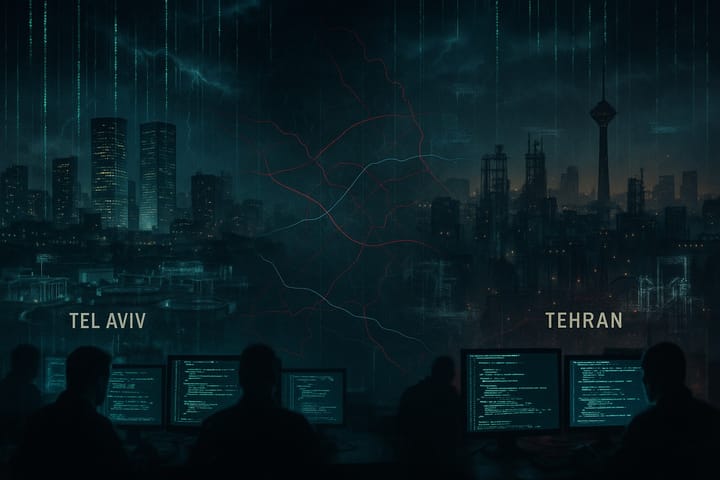The Assassination of Human Rights Activist Munir Said Thalib – A Comprehensive Investigative Report
Poisoned in-flight, Munir’s death reveals a dark conspiracy and justice denied for decades.

Chronology of Munir's Death (September 7, 2004)
Munir Said Thalib passed away on September 7, 2004, during Garuda Indonesia flight GA-974 from Jakarta to Amsterdam, which transited in Singapore. This 38-year-old human rights activist was on his way to continue his human rights law studies in the Netherlands when he was poisoned with arsenic onboard the aircraft. Munir departed Jakarta on the evening of September 6 and transited in Singapore. After the flight resumed from Singapore, Munir began suffering severe illness—vomiting and acute diarrhea occurred shortly after the transit. Cabin crew called on a passenger who was a doctor, but Munir's condition worsened rapidly. About two hours before the plane landed at Schiphol Airport, Amsterdam, Munir died.
On that ill-fated flight, Munir was seated in business class after Garuda pilot Pollycarpus Budihari Priyanto—who was not on duty—offered to swap seats with him. Pollycarpus was strongly suspected of orchestrating the poisoning. He disembarked the plane during the Singapore transit and did not continue to Amsterdam. It was later revealed that Pollycarpus was onboard with a fake assignment letter as Garuda "corporate security"—an assignment arranged through an official letter from Garuda’s management. Allegedly, the arsenic poison was inserted into Munir’s orange juice. Pollycarpus’ proximity to Munir and his access to facilitate the poisoned drink became the focal point of the suspicion of a planned murder scenario.
Autopsy Result from Dutch Authorities: Arsenic and Cause of Death
Upon arrival in the Netherlands, Munir's body underwent a thorough autopsy by the Netherlands Forensic Institute (NFI). The autopsy, announced two months later on November 12, 2004, found a nearly threefold lethal dose of arsenic in Munir’s body. The forensic findings confirmed that the cause of death was arsenic poisoning. The report was also confirmed by Indonesian police investigators sent to the Netherlands. Specifically, the autopsy indicated that the arsenic likely entered Munir’s body during or shortly after the Singapore transit, consistent with the symptoms he exhibited onboard.
The arsenic's effects on Munir progressed quickly. Within hours, Munir suffered from intense vomiting, dehydration, heart complications, and ultimately died before medical help could be administered. According to the report, the extremely high levels of arsenic made it impossible for it to have been ingested accidentally (e.g., via food), instead pointing to a deliberate poisoning.
Legal Process: Pollycarpus, Muchdi PR, and Garuda Executives
Pollycarpus Budihari Priyanto (Direct Perpetrator)
Garuda pilot Pollycarpus Budihari Priyanto, believed to be the main executor of the poisoning, immediately became the prime suspect. In December 2005, the Central Jakarta District Court found Pollycarpus guilty of premeditated murder and sentenced him to 14 years in prison. The court ruled that Pollycarpus was the one who placed the arsenic in Munir’s food or drink. However, the trial left unclear who gave the order. From the beginning, human rights groups suspected Pollycarpus did not act alone, but received instructions, given Munir’s profile as a vocal critic of the military and intelligence institutions.
In October 2006, the Supreme Court overturned the 14-year sentence due to insufficient evidence. Pollycarpus was temporarily released, sparking public outrage and protests. However, in 2007, new evidence (novum) emerged—telecom records showing communications between Pollycarpus and a high-ranking State Intelligence Agency (BIN) official before Munir's death. Based on this new evidence, prosecutors filed for a case review (PK), and in 2008, the Supreme Court reinstated Pollycarpus’ conviction (reportedly increasing his sentence to 20 years). He returned to prison but was later granted parole in 2014. Pollycarpus died of COVID-19 in 2020.
Investigators discovered 41 phone calls between Pollycarpus and a BIN official around the time of Munir’s death. The number was traced to Maj. Gen. (Ret.) Muchdi Purwopranjono, then Deputy V of BIN. This pointed to Pollycarpus potentially acting on orders from within the intelligence agency.
Involvement of Garuda Officials: Indra Setiawan and Rohainil Aini
Apart from Pollycarpus, internal Garuda Indonesia staff played roles that enabled the plan. Indra Setiawan, Garuda’s CEO at the time, and Rohainil Aini, secretary to the Chief Pilot, issued a forged assignment letter that allowed Pollycarpus to board the flight. The letter, dated August 11, 2004, placed Pollycarpus as “corporate security” for the flight. In court, it was revealed that the letter was issued following a request from BIN (specifically, Deputy Chief M. As’ad). The judge ruled that Indra should have known the intelligence-related implications and rejected it.
Both Indra Setiawan and Rohainil Aini were prosecuted. In 2008, Indra received 1 year in prison for abetting premeditated murder. Rohainil Aini was also sentenced to prison, with the Supreme Court later affirming her 1-year sentence in 2009. Separately, Garuda Indonesia was sued in civil court by Munir’s wife, Suciwati. In 2007, the court ruled that Garuda had failed its duty of care by not making an emergency landing when Munir fell ill. The Supreme Court increased the compensation to over Rp 4.6 billion (USD $380,000), though Garuda had not paid this as of several years later.
Muchdi Purwopranjono (BIN Deputy) and the Alleged Mastermind
Maj. Gen. (Ret.) Muchdi Purwopranjono, a former Kopassus commander and then-Deputy V of BIN, was strongly suspected as the intellectual actor behind Munir’s murder. His motive was suspected to be institutional revenge—Munir had exposed military human rights abuses in 1998, which led to Muchdi's dismissal from Kopassus.
Communication records showed over 40 calls between Pollycarpus and Muchdi before and after the murder. Based on this, the Attorney General charged Muchdi in 2008 with ordering Munir's assassination. The trial was historic—the first time a high-ranking intelligence official was tried for the murder of a human rights activist.
However, the trial ended in disappointment. On December 31, 2008, the South Jakarta District Court acquitted Muchdidue to insufficient evidence. The trial was marred by irregularities: witnesses recanted or failed to appear, and intimidation was suspected. The National Human Rights Commission (Komnas HAM) later reported procedural violations. The Supreme Court upheld Muchdi’s acquittal in June 2009. This created a damaging precedent: a suspected mastermind avoided justice.
Presidential Decree No. 111/2004: Formation of the Fact-Finding Team (TPF)
To address public pressure, President Susilo Bambang Yudhoyono issued Presidential Decree No. 111/2004 on December 22, 2004, forming a Fact-Finding Team (TPF) to investigate Munir's death. TPF included police, government, and civil society members. Its task: collect information, recommend prosecutions, and ensure transparency.
After deadline extensions, the TPF submitted its final report in June 2005. The Decree mandated that the report be made publicly available, but the government never released it. TPF concluded that Munir’s death was a planned conspiracyinvolving state actors, particularly BIN.
Findings and Recommendations of the TPF
The TPF report found strong indications that the murder was part of a conspiracy. It cited planning, execution methods (arsenic), location (onboard a plane), and involvement of multiple actors. The TPF condemned BIN’s lack of cooperation, particularly then-Chief A.M. Hendropriyono, who refused to release documents or testify.
The TPF recommended further investigations into five individuals, including high-ranking BIN officials, and urged the President to form a new independent team and pressure police to pursue charges. However, the TPF’s recommendations were largely ignored by the SBY administration. The report was shelved, and key officials refused to testify.
The Missing TPF Report and 2016 Public Information Dispute
Despite the 2004 Decree requiring the TPF report to be made public, it was never released. In 2016, Munir’s widow and rights groups filed a request with the Information Commission. The Commission ruled in their favor, ordering the government to publish the TPF report.
Rather than comply, the State Secretariat claimed the document was “lost.” The government appealed to the Administrative Court, which sided with the state, citing lack of availability. This ruling drew heavy criticism. Komnas HAM and legal experts viewed it as institutional obstruction.
President Jokowi stated in 2016 that he supported the release of the TPF report and ordered the Attorney General to locate it, but no progress was reported. The TPF report remains unreleased and unacknowledged officially.
Civil Society Efforts for Justice
Since 2004, civil society groups including KontraS, Amnesty International, and Munir’s widow Suciwati have continued to demand justice. They’ve held annual commemorations, public campaigns, court challenges, and international advocacy. Suciwati established the Omah Munir museum to preserve Munir’s legacy.
In 2020, civil society groups filed a legal opinion to Komnas HAM, asking them to designate Munir’s case as a gross human rights violation. In response, Komnas HAM formed an Ad Hoc Team in 2022 to explore this. Amnesty criticized the delay, calling for immediate recognition of Munir’s murder as a serious human rights crime.
Government, Parliament, and International Responses
Initial government action under President SBY included establishing the TPF and prosecuting Pollycarpus. However, the administration failed to act on the TPF’s findings. President Jokowi later promised to uncover the TPF report but has made little progress.
Parliament (DPR) has periodically voiced concern, but has not taken strong steps, such as forming a special inquiry committee.
International Pressure
- EU Parliament (2008) demanded the case be fully investigated.
- US Secretary of State John Kerry (2014) called Munir’s murder a key test of Indonesia’s democracy.
- WikiLeaks cables suggested that Hendropriyono held meetings to plan the murder.
- Human Rights Watch, FIDH, OMCT, and HRD Memorial have all documented the case as emblematic of impunity in Indonesia.
Significance of the Munir Case in Indonesian Human Rights History
Munir’s assassination is a litmus test for Indonesia’s justice system. It exposes the dangers faced by rights defenders and highlights systemic impunity. Civil society’s sustained efforts have preserved public memory and pressure. The case remains unresolved, but the fight for justice continues as a beacon of democratic struggle.
The Munir case serves as both a warning and a symbol: a warning of what state power can do without accountability, and a symbol of the resilience of those who fight for justice and human rights.





Comments ()